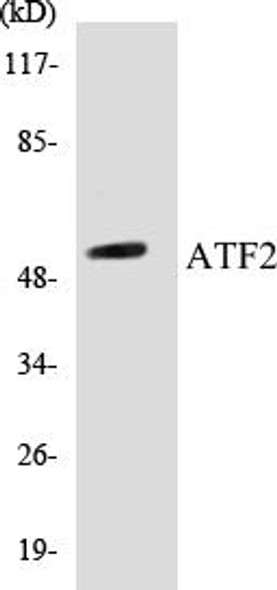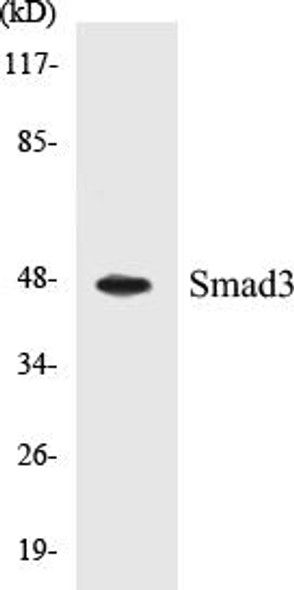Epigenetics and Nuclear Signaling
ERAB Colorimetric Cell-Based ELISA Kit
- SKU:
- CBCAB00646
- Product Type:
- ELISA Kit
- ELISA Type:
- Cell Based
- Research Area:
- Epigenetics and Nuclear Signaling
- Reactivity:
- Human
- Reactivity:
- Mouse
- Reactivity:
- Rat
- Detection Method:
- Colorimetric
Description
| Product Name: | ERAB Colorimetric Cell-Based ELISA |
| Product Code: | CBCAB00646 |
| ELISA Type: | Cell-Based |
| Target: | ERAB |
| Reactivity: | Human, Mouse, Rat |
| Dynamic Range: | > 5000 Cells |
| Detection Method: | Colorimetric 450 nmStorage/Stability:4°C/6 Months |
| Format: | 96-Well Microplate |
The ERAB Colorimetric Cell-Based ELISA Kit is a convenient, lysate-free, high throughput and sensitive assay kit that can detect ERAB protein expression profile in cells. The kit can be used for measuring the relative amounts of ERAB in cultured cells as well as screening for the effects that various treatments, inhibitors (ie siRNA or chemicals), or activators have on ERAB.
Qualitative determination of ERAB concentration is achieved by an indirect ELISA format. In essence, ERAB is captured by ERAB-specific primary antibodies while the HRP-conjugated secondary antibodies bind the Fc region of the primary antibody. Through this binding, the HRP enzyme conjugated to the secondary antibody can catalyze a colorimetric reaction upon substrate addition. Due to the qualitative nature of the Cell-Based ELISA, multiple normalization methods are needed:
| 1. | A monoclonal antibody specific for human GAPDH is included to serve as an internal positive control in normalizing the target absorbance values. |
| 2. | Following the colorimetric measurement of HRP activity via substrate addition, the Crystal Violet whole-cell staining method may be used to determine cell density. After staining, the results can be analysed by normalizing the absorbance values to cell amounts, by which the plating difference can be adjusted. |
| Database Information: | Gene ID: 3028, UniProt ID: Q99714, OMIM: 300220/300256/300438/300705, Unigene: Hs.171280 |
| Gene Symbol: | HSD17B10 |
| Sub Type: | None |
| UniProt Protein Function: | HADH2: Functions in mitochondrial tRNA maturation. Part of mitochondrial ribonuclease P, an enzyme composed of MRPP1/TRMT10C, MRPP2/HSD17B10 and MRPP3/KIAA0391, which cleaves tRNA molecules in their 5'-ends. By interacting with intracellular amyloid-beta, it may contribute to the neuronal dysfunction associated with Alzheimer disease (AD). Defects in HSD17B10 are the cause of 2-methyl-3- hydroxybutyryl-CoA dehydrogenase deficiency (MHBD deficiency). MHBD deficiency leads to neurological abnormalities, including psychomotor retardation, and, in virtually all patients, loss of mental and motor skills. Defects in HSD17B10 are the cause of mental retardation syndromic X-linked type 10 (MRXS10). MRXS10 is characterized by mild mental retardation, choreoathetosis and abnormal behavior. A chromosomal microduplication involving HSD17B10 and HUWE1 is the cause of mental retardation X-linked type 17 (MRX17); also known as mental retardation X-linked type 31 (MRX31). Mental retardation is characterized by significantly sub- average general intellectual functioning associated with impairments in adaptative behavior and manifested during the developmental period. In contrast to syndromic or specific X- linked mental retardation which also present with associated physical, neurological and/or psychiatric manifestations, intellectual deficiency is the only primary symptom of non- syndromic X-linked mental retardation. Belongs to the short-chain dehydrogenases/reductases (SDR) family. 2 isoforms of the human protein are produced by alternative splicing. |
| UniProt Protein Details: | Protein type:Mitochondrial; Oxidoreductase; EC 1.1.1.51; Amino Acid Metabolism - valine, leucine and isoleucine degradation; EC 1.1.1.35; EC 1.1.1.178 Chromosomal Location of Human Ortholog: Xp11.2 Cellular Component: mitochondrion; endoplasmic reticulum; mitochondrial matrix; mitochondrial inner membrane; cytoplasm; plasma membrane Molecular Function:3(or 17)beta-hydroxysteroid dehydrogenase activity; protein binding; 7-alpha-hydroxysteroid dehydrogenase activity; 3-hydroxy-2-methylbutyryl-CoA dehydrogenase activity; 3-hydroxyacyl-CoA dehydrogenase activity Biological Process: tRNA processing; lipid metabolic process; branched chain family amino acid catabolic process Disease: Mental Retardation, X-linked, Syndromic 10; 17-beta-hydroxysteroid Dehydrogenase X Deficiency |
| NCBI Summary: | This gene encodes 3-hydroxyacyl-CoA dehydrogenase type II, a member of the short-chain dehydrogenase/reductase superfamily. The gene product is a mitochondrial protein that catalyzes the oxidation of a wide variety of fatty acids and steroids, and is a subunit of mitochondrial ribonuclease P, which is involved in tRNA maturation. The protein has been implicated in the development of Alzheimer disease, and mutations in the gene are the cause of 17beta-hydroxysteroid dehydrogenase type 10 (HSD10) deficiency. Several alternatively spliced transcript variants have been identified, but the full-length nature of only two transcript variants has been determined. [provided by RefSeq, Aug 2014] |
| UniProt Code: | Q99714 |
| NCBI GenInfo Identifier: | 2492759 |
| NCBI Gene ID: | 3028 |
| NCBI Accession: | Q99714.3 |
| UniProt Secondary Accession: | Q99714,Q5H927, Q6IBS9, Q8TCV9, Q96HD5, |
| UniProt Related Accession: | Q99714 |
| Molecular Weight: | 261 |
| NCBI Full Name: | 3-hydroxyacyl-CoA dehydrogenase type-2 |
| NCBI Synonym Full Names: | hydroxysteroid (17-beta) dehydrogenase 10 |
| NCBI Official Symbol: | HSD17B10 |
| NCBI Official Synonym Symbols: | ABAD; CAMR; ERAB; HCD2; MHBD; HADH2; MRPP2; MRX17; MRX31; SCHAD; MRXS10; SDR5C1; 17b-HSD10; DUPXp11.22 |
| NCBI Protein Information: | 3-hydroxyacyl-CoA dehydrogenase type-2; mitochondrial RNase P subunit 2; AB-binding alcohol dehydrogenase; mitochondrial ribonuclease P protein 2; 3-hydroxy-2-methylbutyryl-CoA dehydrogenase; short chain type dehydrogenase/reductase XH98G2; amyloid-beta peptide binding alcohol dehydrogenase; short chain L-3-hydroxyacyl-CoA dehydrogenase type 2; short chain dehydrogenase/reductase family 5C, member 1; endoplasmic reticulum-associated amyloid beta-peptide-binding protein |
| UniProt Protein Name: | 3-hydroxyacyl-CoA dehydrogenase type-2 |
| UniProt Synonym Protein Names: | 17-beta-hydroxysteroid dehydrogenase 10 (EC:1.1.1.51); 17-beta-HSD 10; 3-hydroxy-2-methylbutyryl-CoA dehydrogenase (EC:1.1.1.178); 3-hydroxyacyl-CoA dehydrogenase type II; Endoplasmic reticulum-associated amyloid beta-peptide-binding protein; Mitochondrial ribonuclease P protein 2; Mitochondrial RNase P protein 2; Short-chain type dehydrogenase/reductase XH98G2; Type II HADH |
| Protein Family: | 3-hydroxyacyl-CoA dehydrogenase |
| UniProt Gene Name: | HSD17B10 |
| UniProt Entry Name: | HCD2_HUMAN |
| Component | Quantity |
| 96-Well Cell Culture Clear-Bottom Microplate | 2 plates |
| 10X TBS | 24 mL |
| Quenching Buffer | 24 mL |
| Blocking Buffer | 50 mL |
| 15X Wash Buffer | 50 mL |
| Primary Antibody Diluent | 12 mL |
| 100x Anti-Phospho Target Antibody | 60 µL |
| 100x Anti-Target Antibody | 60 µL |
| Anti-GAPDH Antibody | 60 µL |
| HRP-Conjugated Anti-Rabbit IgG Antibody | 12 mL |
| HRP-Conjugated Anti-Mouse IgG Antibody | 12 mL |
| SDS Solution | 12 mL |
| Stop Solution | 24 mL |
| Ready-to-Use Substrate | 12 mL |
| Crystal Violet Solution | 12 mL |
| Adhesive Plate Seals | 2 seals |
The following materials and/or equipment are NOT provided in this kit but are necessary to successfully conduct the experiment:
- Microplate reader able to measure absorbance at 450 nm and/or 595 nm for Crystal Violet Cell Staining (Optional)
- Micropipettes with capability of measuring volumes ranging from 1 µL to 1 ml
- 37% formaldehyde (Sigma Cat# F-8775) or formaldehyde from other sources
- Squirt bottle, manifold dispenser, multichannel pipette reservoir or automated microplate washer
- Graph paper or computer software capable of generating or displaying logarithmic functions
- Absorbent papers or vacuum aspirator
- Test tubes or microfuge tubes capable of storing ≥1 ml
- Poly-L-Lysine (Sigma Cat# P4832 for suspension cells)
- Orbital shaker (optional)
- Deionized or sterile water
*Note: Protocols are specific to each batch/lot. For the correct instructions please follow the protocol included in your kit.
| Step | Procedure |
| 1. | Seed 200 µL of 20,000 adherent cells in culture medium in each well of a 96-well plate. The plates included in the kit are sterile and treated for cell culture. For suspension cells and loosely attached cells, coat the plates with 100 µL of 10 µg/ml Poly-L-Lysine (not included) to each well of a 96-well plate for 30 minutes at 37°C prior to adding cells. |
| 2. | Incubate the cells for overnight at 37°C, 5% CO2. |
| 3. | Treat the cells as desired. |
| 4. | Remove the cell culture medium and rinse with 200 µL of 1x TBS, twice. |
| 5. | Fix the cells by incubating with 100 µL of Fixing Solution for 20 minutes at room temperature. The 4% formaldehyde is used for adherent cells and 8% formaldehyde is used for suspension cells and loosely attached cells. |
| 6. | Remove the Fixing Solution and wash the plate 3 times with 200 µL 1x Wash Buffer for five minutes each time with gentle shaking on the orbital shaker. The plate can be stored at 4°C for a week. |
| 7. | Add 100 µL of Quenching Buffer and incubate for 20 minutes at room temperature. |
| 8. | Wash the plate 3 times with 1x Wash Buffer for 5 minutes each time. |
| 9. | Add 200 µL of Blocking Buffer and incubate for 1 hour at room temperature. |
| 10. | Wash 3 times with 200 µL of 1x Wash Buffer for 5 minutes each time. |
| 11. | Add 50 µL of 1x primary antibodies (Anti-ERAB Antibody and/or Anti-GAPDH Antibody) to the corresponding wells, cover with Parafilm and incubate for 16 hours (overnight) at 4°C. If the target expression is known to be high, incubate for 2 hours at room temperature. |
| 12. | Wash 3 times with 200 µL of 1x Wash Buffer for 5 minutes each time. |
| 13. | Add 50 µL of 1x secondary antibodies (HRP-Conjugated AntiRabbit IgG Antibody or HRP-Conjugated Anti-Mouse IgG Antibody) to corresponding wells and incubate for 1.5 hours at room temperature. |
| 14. | Wash 3 times with 200 µL of 1x Wash Buffer for 5 minutes each time. |
| 15. | Add 50 µL of Ready-to-Use Substrate to each well and incubate for 30 minutes at room temperature in the dark. |
| 16. | Add 50 µL of Stop Solution to each well and read OD at 450 nm immediately using the microplate reader. |
(Additional Crystal Violet staining may be performed if desired – details of this may be found in the kit technical manual.)






